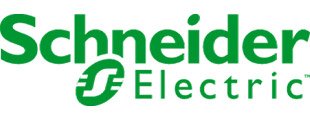
+27 (0)11 0461900
Private Bag X139 Halfway House 1685

Beyond the panels
By Thabang Byl, Buildings Segment Lead at Schneider Electric
We’ve come a long way since the first solar deployments in business and residential areas. It’s become somewhat commonplace to see panels glimmering away in the sun or lights shining brightly when neighbourhoods are in the midst of pitch dark loadshedding.
However, like most things in life, solar installations come with a reasonable amount of responsibility, and the onus lies with both the consumers and the service providers.
A lot has been said about the over or underestimation of solar installation requirements. What has become abundantly clear is this discrepancy is often due to a lack of understanding energy consumption patterns. Unfortunately, this extends beyond the initial installation phase, with systems often not scaled to meet future demand requirements.
Failure to account for future changes in infrastructure or usage can lead to inefficient installations, resulting in wasted resources and suboptimal performance.
The above also reemphasises the importance of partnering with reputable solar solution provider which can accurately plan for the future. It requires meticulous planning as well as the utilisation of energy management technologies to fully optimise and future proof renewable energy installations such as solar.
The road (not yet) travelled
In a perfect world, solar installations will run for eons, maintenance and monitoring free, without any user intervention. But maintenance, for one, plays a vitally important role in ensuring the long-term viability of solar installations.
As a practical example, a school in the Northern suburbs of Gauteng had been experiencing solar yield degradation. It was found that the panels’ yield was compromised due to surface dust and debris. The school decided to schedule regular cleaning of their solar panels which now ensures it panel yield runs at optimal levels.
It’s a small but important part of the overall maintenance of installations that should be employed by all users, irrespective of the solar plant size.
Taking it one step further is monitoring. Here, smart components enable real-time monitoring and optimisation of infrastructure, providing valuable insights for decision-making. Whether it's tracking energy output, utility connection status, or battery charge levels, these technologies empower users to take proactive steps to maximise performance of their solar investment.
Load management is another important aspect of solar installation optimisation. Residential management could include ensuring high consumption items like geysers are only turned on when the solar plant delivers maximum yield, mitigating the need to use the grid. Gas geysers are also a viable, complimentary option to reduce consumption.
In the case of larger installations such as hotels, intelligently managing high demand loads such as HVACs and leveraging automation, operations teams can reduce energy consumption during peak times and again minimise cost.
Solar installations are not just about installing panels; it’s about maximising efficiency and harnessing the full potential of solar energy. By prioritising maintenance, and implementing smart technology energy management practices, both residential and business users can plan for the future, today.




